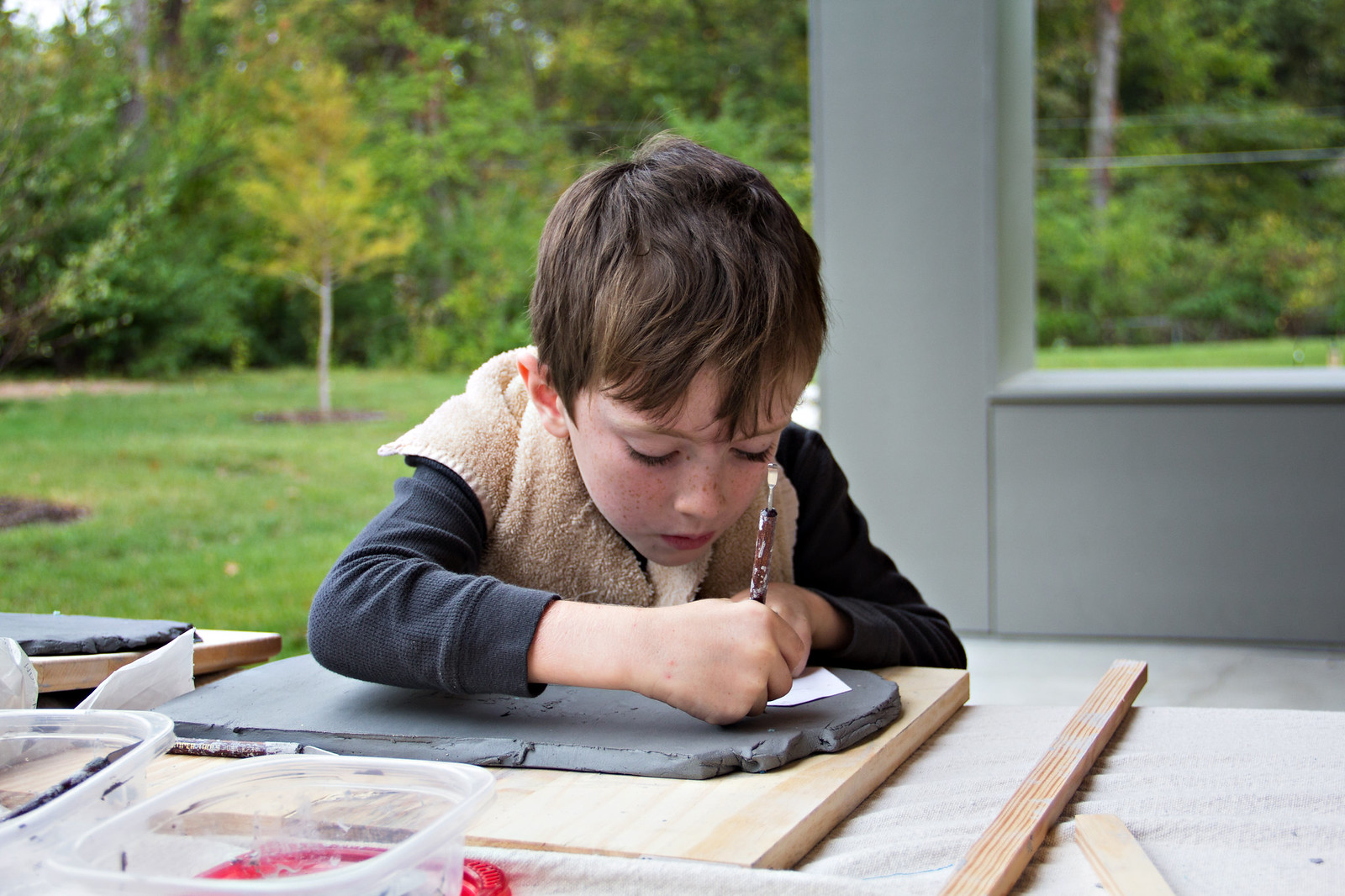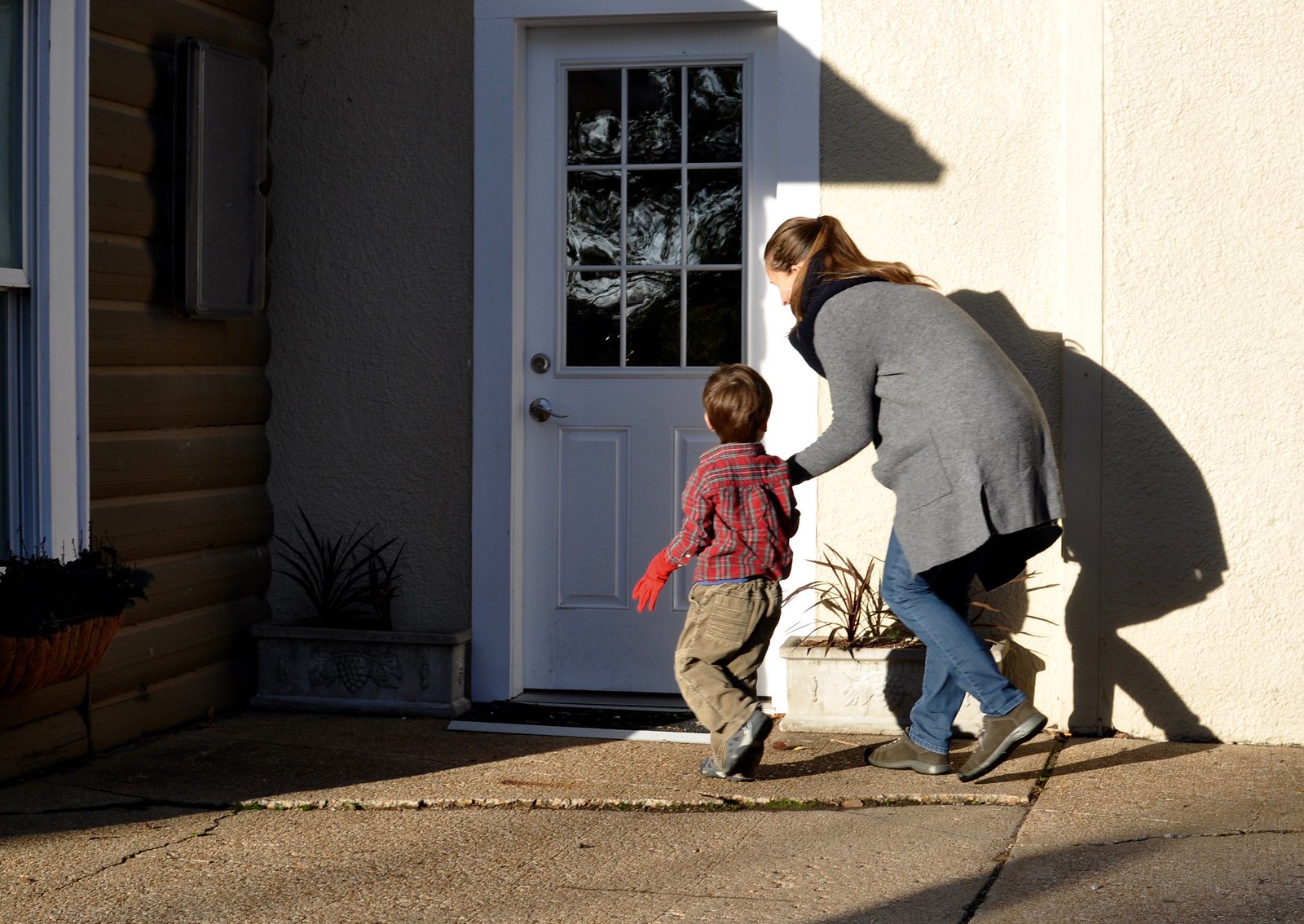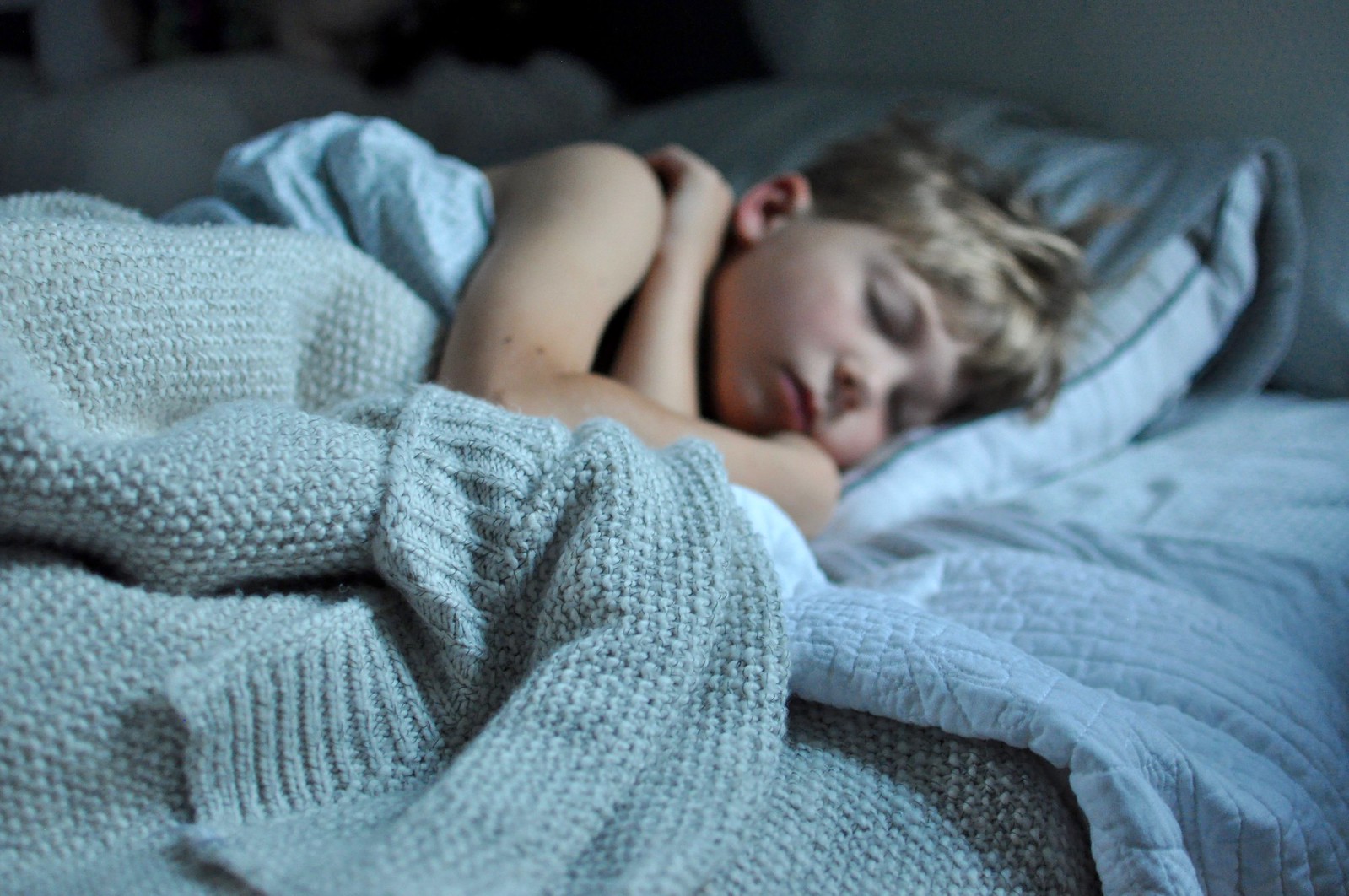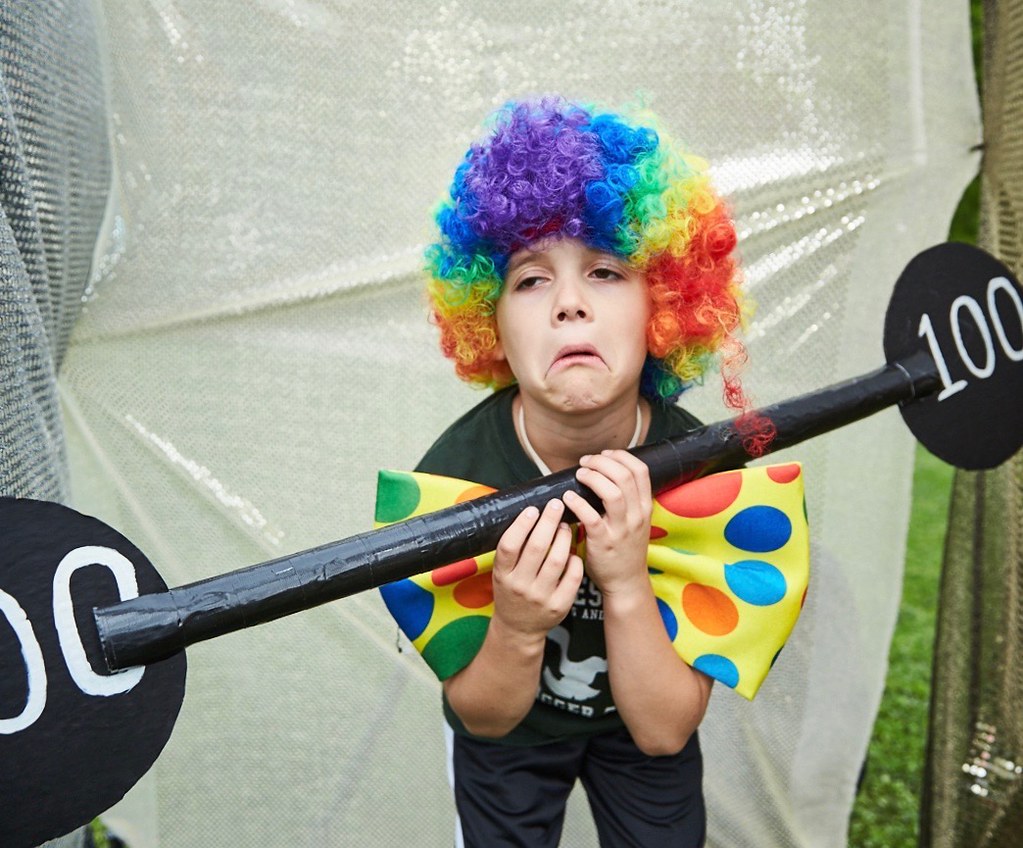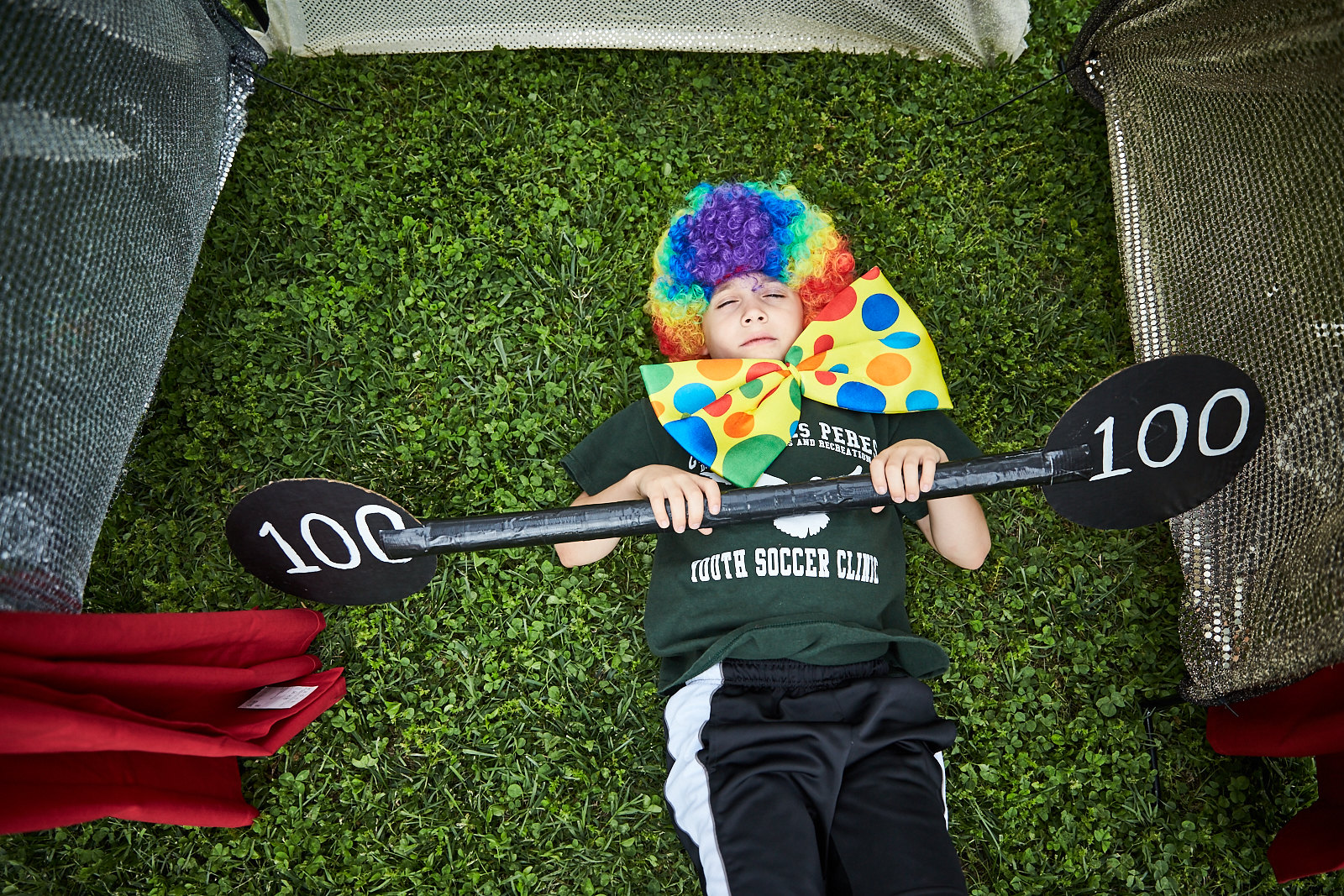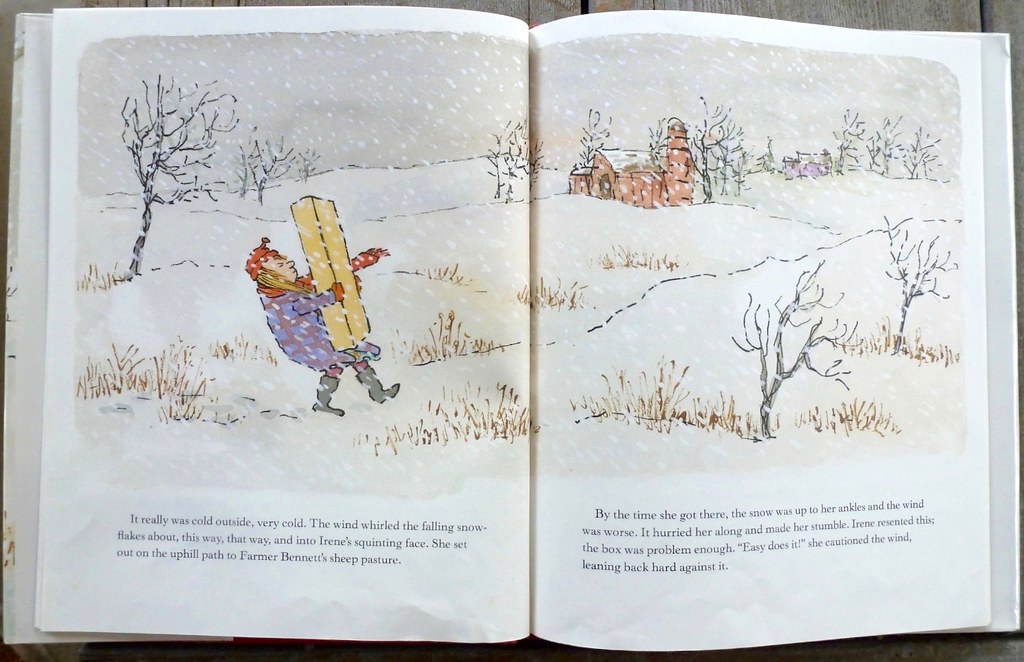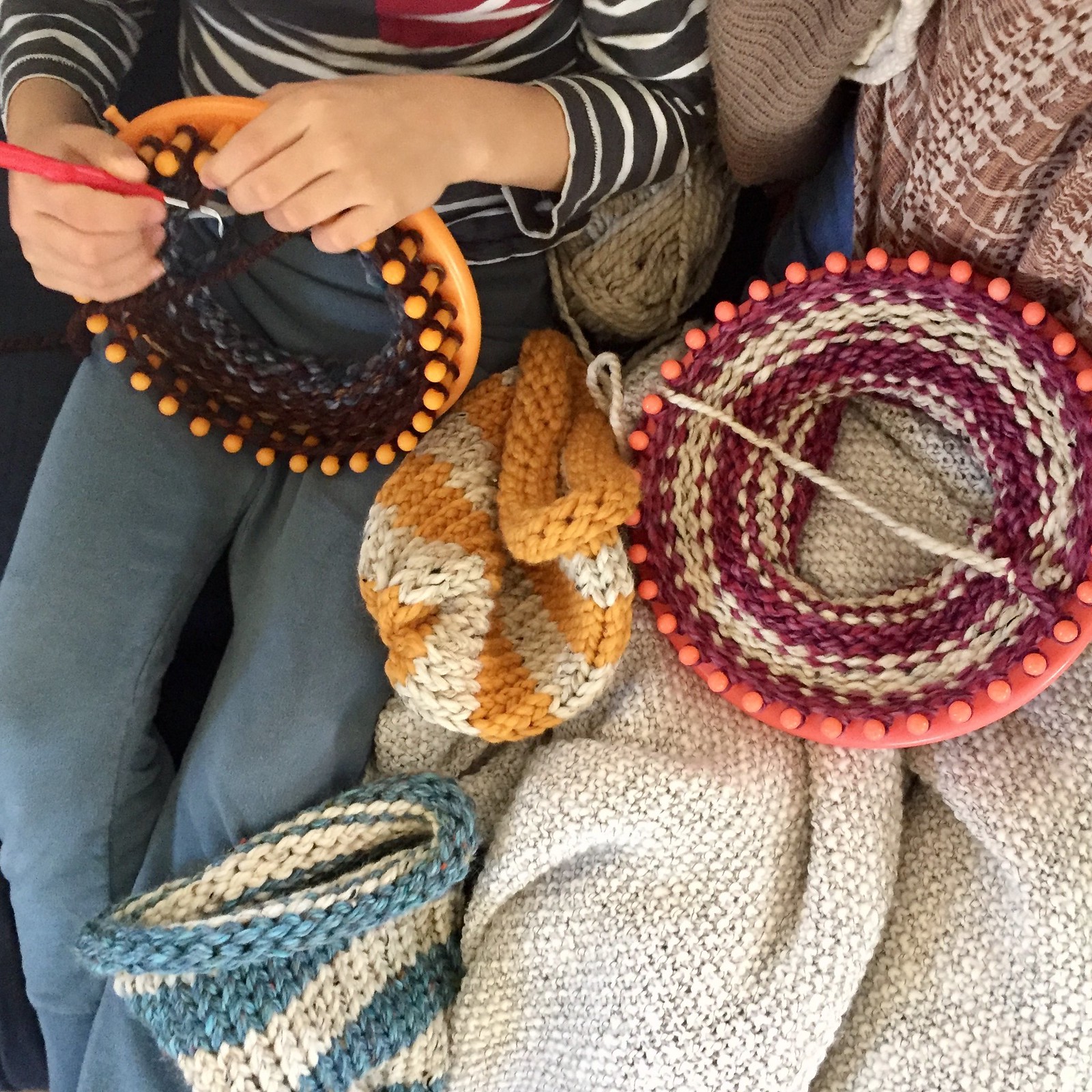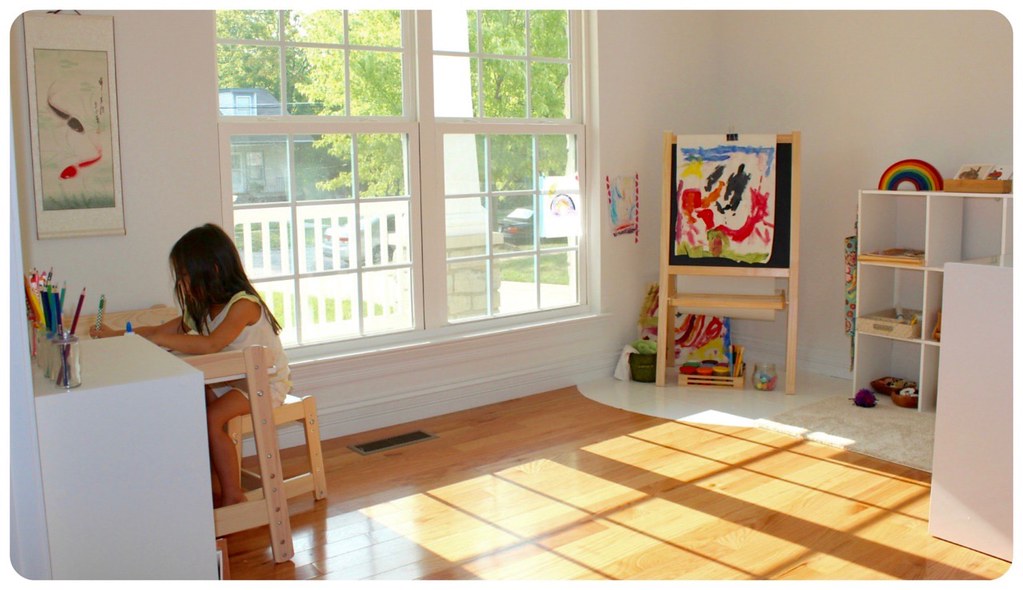 Montessori schools have such inviting, calm spaces, it's no wonder families seek to recreate a similar environment within their own homes. While home is home and home is not a classroom, there are a few things we can do to facilitate an orderly work space for our children within our home. Today, we share Primary Assistant Sophie Andre's beautiful, inspiring home Montessori space which she organized for her three-year-old daughter Lynne. Sophie originally shared this space on her blog, 琳 CHRONIQUES D’UNE GLOBE-TÊTEUSE on August 19th, and so generously agreed to let us share it here, with you, in addition to a short interview with Sophie about the space. Enjoy, and be sure to check out Sophie's blog, which is written in both French and English!
Montessori schools have such inviting, calm spaces, it's no wonder families seek to recreate a similar environment within their own homes. While home is home and home is not a classroom, there are a few things we can do to facilitate an orderly work space for our children within our home. Today, we share Primary Assistant Sophie Andre's beautiful, inspiring home Montessori space which she organized for her three-year-old daughter Lynne. Sophie originally shared this space on her blog, 琳 CHRONIQUES D’UNE GLOBE-TÊTEUSE on August 19th, and so generously agreed to let us share it here, with you, in addition to a short interview with Sophie about the space. Enjoy, and be sure to check out Sophie's blog, which is written in both French and English! Today I open the door of our new house to show you Lynne’s space dedicated to arts and crafts: the studio. Lynne shares this space with her dad who has his working desk here too (I agreed to let him a bit of space ! ;)). This room receives a lot of light through the day. Towards the end of the afternoon it is particularly enjoyable with the golden light coming through the big west window.This is where Lynne can play music, paint, draw, glue, tape, work with yarn or beads or other material… and read. I gathered all the books related to art and music (there are different reading corners throughout the house). I wanted to create a peaceful space, uncluttered and without too much visual distraction. So except for a mirror, our Chinese water painting of fishes (that follows us everywhere), and some painting cards that I rotate, there is nothing on the walls.
Today I open the door of our new house to show you Lynne’s space dedicated to arts and crafts: the studio. Lynne shares this space with her dad who has his working desk here too (I agreed to let him a bit of space ! ;)). This room receives a lot of light through the day. Towards the end of the afternoon it is particularly enjoyable with the golden light coming through the big west window.This is where Lynne can play music, paint, draw, glue, tape, work with yarn or beads or other material… and read. I gathered all the books related to art and music (there are different reading corners throughout the house). I wanted to create a peaceful space, uncluttered and without too much visual distraction. So except for a mirror, our Chinese water painting of fishes (that follows us everywhere), and some painting cards that I rotate, there is nothing on the walls. Lynne can freely access all the materials presented on the shelves : glue, tape, markers, pencils, scissors, different kinds of paper, stickers, paint, yarn, pompoms, pipe cleaners, beads… homemade play dough is stored in the fridge so Lynne needs to ask for it.
Lynne can freely access all the materials presented on the shelves : glue, tape, markers, pencils, scissors, different kinds of paper, stickers, paint, yarn, pompoms, pipe cleaners, beads… homemade play dough is stored in the fridge so Lynne needs to ask for it.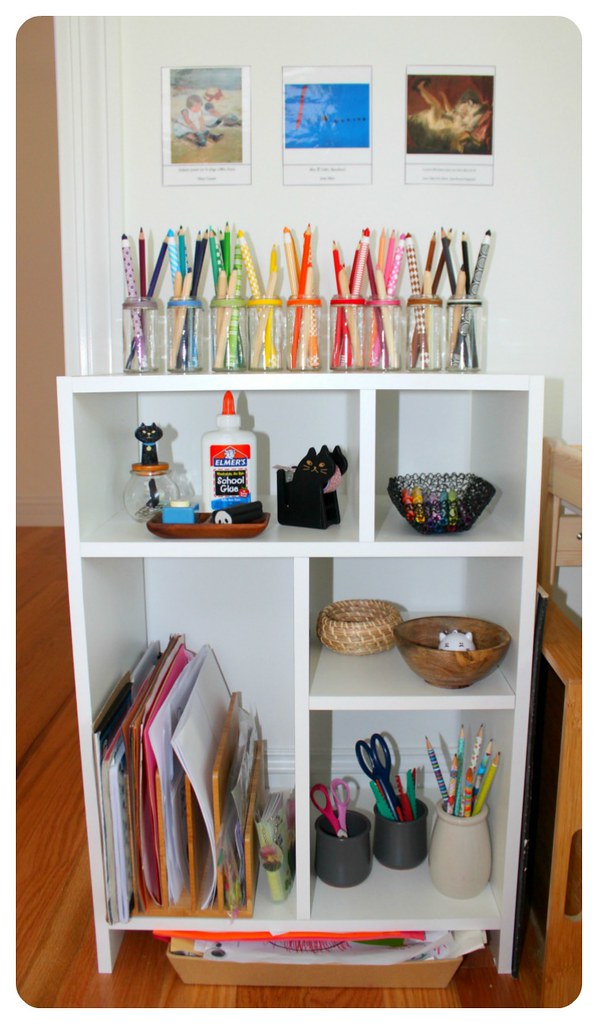 The finished work (this is coming directly from what we do in our Montessori classroom) is put in a bin under the office supplies shelf. This is not very convenient but I did not find a better place for now. We go through this bin when it is full to select what Lynne wants to keep (I store it in the closet of her bedroom) and what can be recycled.
The finished work (this is coming directly from what we do in our Montessori classroom) is put in a bin under the office supplies shelf. This is not very convenient but I did not find a better place for now. We go through this bin when it is full to select what Lynne wants to keep (I store it in the closet of her bedroom) and what can be recycled. There are two kinds of paint available : the regular washable paint used on the easel and the watercolor painting on a tray for more refined technique and different projects. In each case, we went though all steps that lead her to use this material independently. She has her apron on the side, towel and bucket (the bathroom is just beside). Obviously, I make sure to help with the cleaning if needed and remind her of some steps. I ordered on Amazon those no-spill paint cups. Very convenient to prevent accidents, and also to store paint.
There are two kinds of paint available : the regular washable paint used on the easel and the watercolor painting on a tray for more refined technique and different projects. In each case, we went though all steps that lead her to use this material independently. She has her apron on the side, towel and bucket (the bathroom is just beside). Obviously, I make sure to help with the cleaning if needed and remind her of some steps. I ordered on Amazon those no-spill paint cups. Very convenient to prevent accidents, and also to store paint. The craft shelf can present different activities depending on Lynne’s interest. Currently, we can see scrap papers, tracing lines and cutting worksheets, the watercolor painting tray, a basket of wood sticks, pipe cleaners, pompoms, googly eyes, beads and thread, yarn and pompom maker, gooey tiny balls (that look a bit like playdough) with a vinyl mat, and a basket of playdough ustensils with a vinyl mat.
The craft shelf can present different activities depending on Lynne’s interest. Currently, we can see scrap papers, tracing lines and cutting worksheets, the watercolor painting tray, a basket of wood sticks, pipe cleaners, pompoms, googly eyes, beads and thread, yarn and pompom maker, gooey tiny balls (that look a bit like playdough) with a vinyl mat, and a basket of playdough ustensils with a vinyl mat.

 The music space, with different instruments: percussion, wind, xylophone, and the beautiful bells given to me by my uncle this summer, music books or books related to music, a rain stick, and matching cards of music instruments by Eltern vom mars.
The music space, with different instruments: percussion, wind, xylophone, and the beautiful bells given to me by my uncle this summer, music books or books related to music, a rain stick, and matching cards of music instruments by Eltern vom mars. Villa di Maria: This space is so beautiful! What was your inspiration?Sophie Andre: There is a wonderful Montessori inspired mom community on social media. The writers of the blogs Our Montessori Life and How We Montessori are big references, but I am particularly fond of Eltern vom Mars. Anna takes amazing pictures and her settings are so inspiring, clean, white, peaceful. Our classrooms are obviously also good places to find inspiration for organization principles.VdM: How do you foresee Lynne's music and art space changing as she grows?SA: Good question.... I think she will be able to use this space for some years. The setting will probably stay the same as the room is not very big and Lynne shares it with her dad. Rather, the changes will concern what is available to her: the art supplies more varied, the craft material more complex, and asking more refined skills. There are so many art/craft activities to offer and then let her explore. I have a lot of art books waiting for her when she is bit older (museum gift shops are the best places in the world !). The music shelf is completed little by little when I find interesting instruments. Lynne loves music and dance; she likes to explore sounds. I still need to think and work on this shelf. The real music player is accessible to her on the living room, but she is not using it very much and I am not too happy with the setting right now... See, it is a perpetual thinking!VdM: What tips do you have for parents who want to convert a space in their home to make it more Montessori-friendly?SA: At first, I fed my imagination with my favorite blogs. Then I sat on the floor and looked. Imagined our own space... I spent a long long time daydreaming on the floor, at the level of my daughter's height. What would she see? What would she like to use? This can take days or months!
Villa di Maria: This space is so beautiful! What was your inspiration?Sophie Andre: There is a wonderful Montessori inspired mom community on social media. The writers of the blogs Our Montessori Life and How We Montessori are big references, but I am particularly fond of Eltern vom Mars. Anna takes amazing pictures and her settings are so inspiring, clean, white, peaceful. Our classrooms are obviously also good places to find inspiration for organization principles.VdM: How do you foresee Lynne's music and art space changing as she grows?SA: Good question.... I think she will be able to use this space for some years. The setting will probably stay the same as the room is not very big and Lynne shares it with her dad. Rather, the changes will concern what is available to her: the art supplies more varied, the craft material more complex, and asking more refined skills. There are so many art/craft activities to offer and then let her explore. I have a lot of art books waiting for her when she is bit older (museum gift shops are the best places in the world !). The music shelf is completed little by little when I find interesting instruments. Lynne loves music and dance; she likes to explore sounds. I still need to think and work on this shelf. The real music player is accessible to her on the living room, but she is not using it very much and I am not too happy with the setting right now... See, it is a perpetual thinking!VdM: What tips do you have for parents who want to convert a space in their home to make it more Montessori-friendly?SA: At first, I fed my imagination with my favorite blogs. Then I sat on the floor and looked. Imagined our own space... I spent a long long time daydreaming on the floor, at the level of my daughter's height. What would she see? What would she like to use? This can take days or months!
Arts and crafts can be messy. What is the level of freedom I am ready to give to my child ? Would I prefer her to do this or that specific activity outside or I am ready to let her do it inside? What space would be the best for everyone's interest? Can I give a whole room or just a little shelf? Is there enough light or do I need to add more? Is the area available okay when spills occur (can I wash easily or is there carpet?) or I will be mad if my beautiful sheers are stained? What can my child handle? What do I set aside for now?
I thought the key was just like in the classroom, to prepare the environment the best I can for my child to succeed and avoid big messes (and preserve the peace!). I wondered for each activity what would she need to complete the activity and clean up. If I let her freely use paint, she obviously needs a towel nearby, an apron, a pot to put dirty brushes, a vinyl protection for the floor, paper that's easy to access, a place to put the finished paint, a sink not too far... I cut some vinyl mats for the use of play dough or glue...
I am personally a huge fan of shelves for my daughter. I like the idea of one place for each thing. It helps to keep everything clean and accessible. Pots, bins, and desk organizers will help. I make sure pencils, markers, papers, and stickers are in good condition and attractive. Honestly, once the space is organized, it does not require me to take much time to check and straighten it. I try to erase any trace of pencils or marker (with my friend the magic eraser) to emphasize and help build the feeling of "Oh, this place looks nice and clean, let's try to keep it this way."
Our Swedish friend Ikea is a great place to find kid-friendly items. This is where I bought the desk and chair, the easel, some pencils. And once again, I keep thinking, sitting on my floor, observing my daughter, and I wonder, why she does not put her finished drawing in the basket where it should be? I observe, silly me, your basket is not convenient at all, too small, not accessible for a 3 year old... Ok let's try something else.
I make mistakes and I am learning too, every day, and my daughter is showing me the way if I take the time to watch her.
Wow, what a beautiful, well-organized Montessori home space! Thank you, Sophie, for sharing your thoughts and ideas with us. What an inspiration!
 With spring right around the corner, we're hoping you and your families are finding the motivation to go outside and enjoy the great outdoors! For those of you with fourth-years, it's time to take advantage of Every Kid in a Park, which provides all fourth graders and their families an annual pass for free admission to the country's national parks, forests, monuments, and wildlife refuges! Find out more below.
With spring right around the corner, we're hoping you and your families are finding the motivation to go outside and enjoy the great outdoors! For those of you with fourth-years, it's time to take advantage of Every Kid in a Park, which provides all fourth graders and their families an annual pass for free admission to the country's national parks, forests, monuments, and wildlife refuges! Find out more below. 

























































































